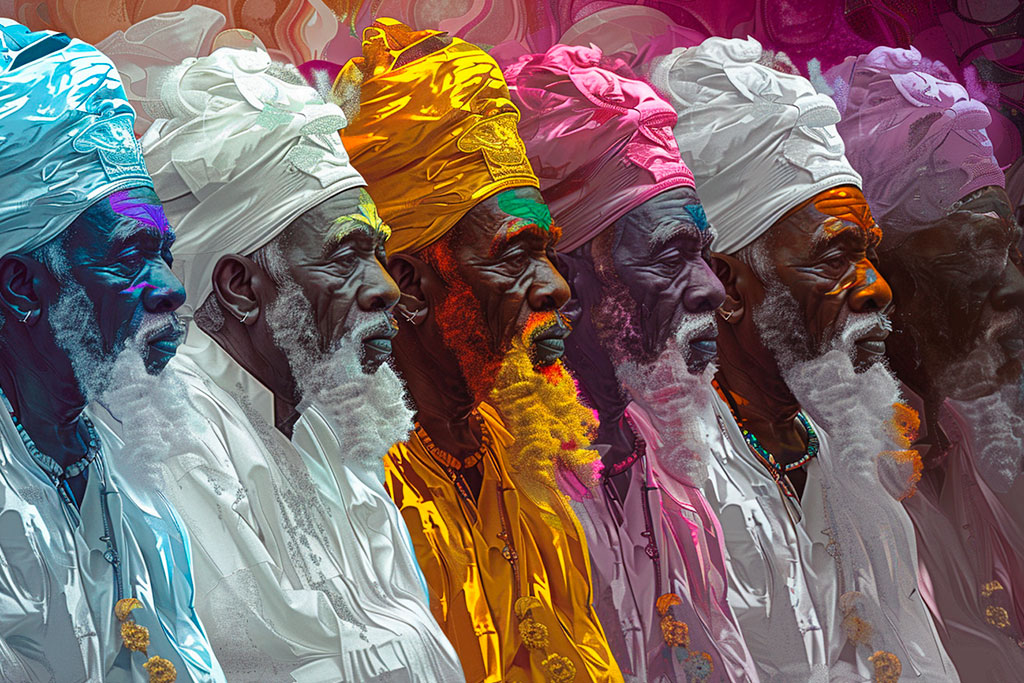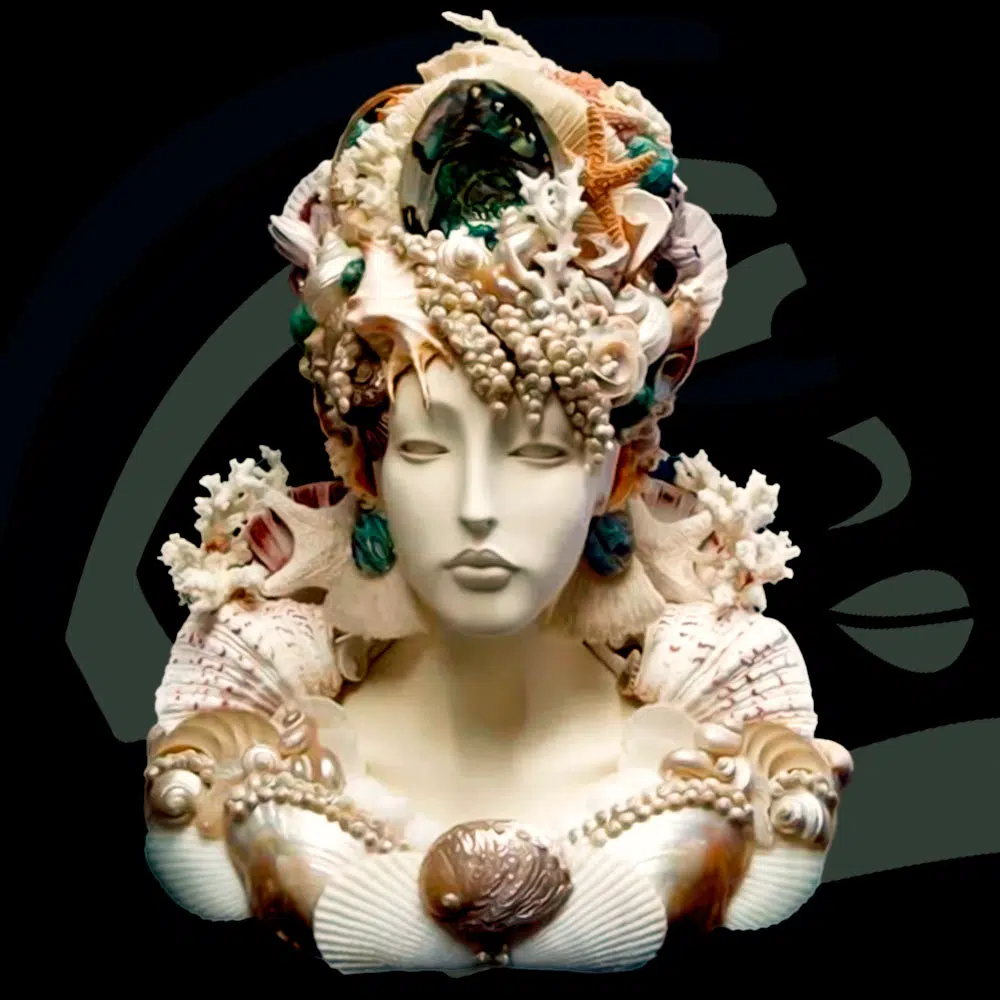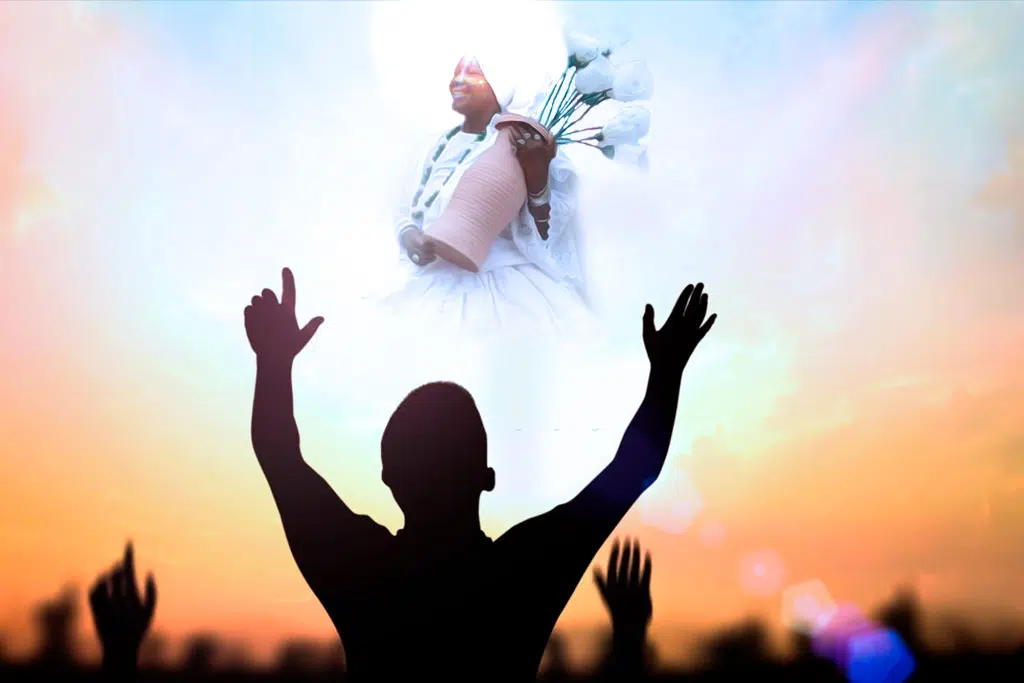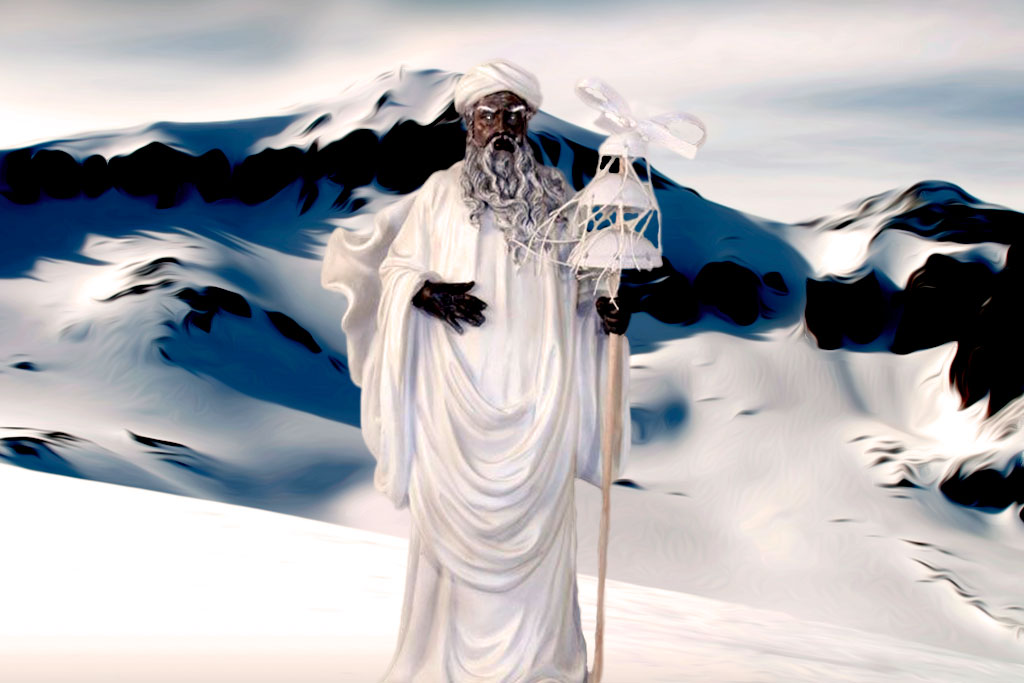Oke: The Orisha of the hill and the heights

Oke is the Orisha that accompanies Obatala. Indispensable in the consecrations of kari osha in the rule of Osha or Afro-Cuban Santeria. Related to the harmony of spiritual energies emanating from Olodumare (God) and with mother earth.
Who is Ok?
Oke is the Orisha who lives on the hill. Its energy in nature is manifested in the great mountains and in high altitude places, where the land has high elevations, which shows that it is a spirituality that has considerable ancestry, since the rock formations are very old. The translation of his name «Òké» in Yoruba language means: height, elevation, and greatness.
It is believed that Oke is physically fair-skinned with salt-and-pepper hair. That is why she is represented with a white stone that symbolizes the mountainous massifs. The worship of him promotes fertility, both in crops and in human beings. The cult of him is common in the Yoruba areas where there are elevations. He lives as a watchman of the imminent dangers that could lie in wait for the other divinities.
His cult is believed to originate from Abeokuta and Ibadan, Nigeria. In his land he was recognized as the guardian of the territory, especially in the war waged with Ifé. His refuge is located on the mountain of Oshuntá, a place from where his cult and adoration spread.
The annual Oke festival is celebrated in Ijio, Nigeria. It is one of the Orisha that integrates the trilogy made up of Ogue and Orisha Oko. These three deities balance the energies emanating from the earth. He is the brother of Oshosi and Inlé. Inseparable companion of Obatala.
Spiritually Oke is the representation of the perfection of the original state of man, whose birth is propitiated by Olodumare and at the end of his earthly cycle he must return to him. Therefore, he has a close relationship with the mysteries of Olofin and the power granted to mother earth.
Within the rule of Osha, it has the very important attribution of contributing to the making of the machuquillo produced through the sacred herbs of the igbodun (fourth saint), for which it is present in an indispensable way in the Ashé of the Orisha, just as it is very effective for the manufacture of all types of powders.
Necklace
It does not have specific elekes (necklaces).
ok's colors
Oke's color is white, due to the close relationship he has with Obatalá, Orisha with whom he shares his power on the hill.
Number of this Orisha
His number is 8. This digit has a very special vibration that is connected to the abundance produced by hard work that leads to success. In addition, it is related to balance and the mysteries of spiritual harmony, in fact, his figure is perfectly symmetrical, which is associated with proportionality and control.
Oke's tureen
In Abeokuta and Ibadan, the rituals of Oke were executed by performing the worship of its foundation directly on the ground, making contact with the energy of the Earth, and its secret was covered with a white painted gourd, which had a hole in its upper part where the sacrificial animals were immolated. That igba was only uncovered when the foundation was going to be used for some ritual or its established eboses.
In the customs of Santeria or Osha's rule, there are several practices regarding the receptacle where the foundation of this Orisha is housed, which vary depending on the customs of the saint's houses. In some customs it is placed in a flat clay pot, or on a white plate, and covered with cotton. In other more common customs, it lives in the basket, next to or inside Obatala's tureen.
Herbs
His favorite herbs are: alacrancillo, bejuco guaro and candelilla. In addition, it shares the herbs used by the Obatala, such as: atiponlá or toston, almond, cotton, barberry, white aguinaldo, aguedita, clove basil, mugwort, rice, terrestrial caltrop, garlic, holly, saffron, white pigweed, bell, canutillo, white coral, custard apple, dormouse, diamela, scouring pad, soursop, gallant by day, jasmine from the land, vegetable brain, tamarind, prickly pear, clover, milky grass. marvel, and yagruma,
Odu Isalayé In what sign did I come down to earth?
The Odu of Ifá that accompanied Deity Oke on his journey from Heaven to Earth is: Baba Ofun Meyi. Through the diloggun he speaks through the Odu: Eyeunle tonti Eyeunle.
You can read: Who is Obatala?
How is Oke received?
The foundation of this Orisha It is received with Obatala. He is known as an Orisha of foundation, that is, he does not settle, but is received in all kariosha consecrations.
Ok's story

In the land of Ibadan, where Oke comes from, he is known by the name "Atajue Olomu Ore". His story tells that when a great war was being waged with Ife, Oke took refuge in the Oshunta mountain, going to Orunmila to perform divination, who looked at him with the Odu of Ifa: Baba Eyiogbe, recommending him to make sacrifice with: 2 pigeons, 4 mangoes, a jar, sticks from various trees, cloth: white, red, yellow and blue, the ebbo was made immediately. With these fabrics Oke covered himself to win and save himself from his enemies, because he is the son of Egiogbe and that is how he reigned in Oshunta.
How is Oke cared for?
To serve Oke, all kinds of fruits are entertained, especially sandy fruits and those that are customary to offer Obatala. You can also serve him with white candles, yams, milk, sweets, oñi (honey from bees), awado (roasted corn), and other ingredients from the holy table.
The animals that are sacrificed to him are: chiva, goat, roosters, hens, pigeons, and guinea pigs. He usually eats together with Obatala.
Benefits of receiving Oke
This is a fundamental Orisha for those enshrined in the Osha rule. Its main function is the confection of the Ashé for the coronation ceremony of the initiate. In addition, his foundation comes to the life of a santero to contribute to the dynamic balance of his own spirituality and the connection that is maintained with the vital energy of Olodumare (God). He helps foster the spiritual harmony that links us with all the spiritualities of creation.
What is asked of Oke?
The Orisha Oke is normally asked to intervene in matters related to:
- In the consecrations of kariosha it contributes so that they enjoy the Ashé emanated from Olodumare.
- It helps maintain the proper functioning of health, both physical and spiritual.
- It benefits fertility, pregnancies and having good deliveries.
- You are asked so that the efforts are well rewarded, such as the sowing that gives good harvests.
- It favors the processes of understanding the mysteries of destiny and one's own existence.
- You are entrusted with protection to enjoy a fresh spirituality, find enlightenment and transcendence.
Oke's Prayer
«Abana titimo mowuayw yiku kan como lomo osi ataye olomu ore abana titimo omgrogun aye un mai mai pitilla toke titila toke. Ashe».
Works with Oke
Work to refresh the roads
4 daughters of Obatalá are sought to prepare Omiero of 8 herbs of that Orisha. This ceremony is done when the sun is strong. They sing to Obatalá and they ask him, they put yam on it, and eko to Oke. She is fed white goat. The goat is opened and husks, cocoa butter, corojo oil and honey are added, it is placed in front of an open Oke, the next day it is placed at the foot of a hill with cotton, next to a yagruma bush and it is called to Oke to help him solve his circumstances. For four continuous days, the person will enter the room where the saint is, always dressed in white, and the head will be prayed with cocoa butter, shell, and fresh coconut.
Work start the year with good fortune at the foot of Oke
During the first 16 days of the year, Oke is placed on the ground covered with a jícara and 7 eggs are placed around him, greeting him in the morning with this prayer:
«Oke mowuako Oke mowuao aye ayare baba pitila toke, ayari baba iku otemi, arun otemi, ofo otemi, eyo otemi, bogbo osogbo unlo. I will go umbo airku, I will go owo, I will go omo, I will go ashegun ota colonaddio, bogbo I will go yale tesi timbelaye.”
Patakies, stories and legends of Oke
How Ejiogbe helped Oke resist the attack of his enemies.
It happened that Oke, the mountain, was advised to make sacrifice because of the evil plans that his enemies were preparing against him, he did so immediately. It happened that the machete and the hoe were trying to destroy it. Right after Oke made the sacrifice, the hoe and the machete went towards his land with the aim of destroying him, but they couldn't even scratch his body. The mountain even grew larger. He rejoiced and thanked his diviner forever, orunmila.
When his harvest was stolen.
On this road, Oke saw that everyone, both people and animals, came and ate all his harvest, he went to Orunmila's house to be advised. Ifa recommended the appropriate sacrifices. He was further told that he should put bald Chinese stones around the hill and three sticks for the flags and fence wire, and to leave the ebo on the hill.
Immediately, with the sticks and the barbed wire, he made a fence, he placed the white sheet one day, the red one the next, and the black the next, so that when the people and animals came to finish off the hill's harvest They did not know how to access it because there was fog, and they tripped over the fence, looked and saw everything white and left.
The next day they came back and saw everything red. And the next day they saw him black. Seeing that they could not find Oke's harvest, they left everything for lost and left, never to bother Oke again.
Pataki: The harvester and his crops on the Oke hill.
On this road, there was a harvester who lived and had a crop in Lerí Oke, but he had many enemies among men and animals. That man named Ofun, who went to consult with Orula, and this Odu saw him, was told the necessary materials to confuse the attacks of his arayese and thus be able to prevent them from interfering with his prosperity.
Ofun carried the objects to do what orunmila I "ll guide you. When their opponents arrived at the outskirts of Oke, they said: "This is not the place we came from." Three days passed and they returned, but Ofun had changed the ebbo again, confusing them once again, doing the same thing three days later in which they made one last attempt. Finally, filled with much confusion, Ofun's enemies decided not to return to their lands again, since they were convinced that they were mistaken about the place where they were looking for him; It was then, that in this way he was able to defeat his arayeses and prosper in his lands with his crops.





